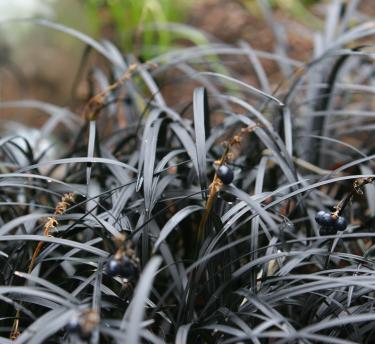Make a pledge, keep climate positive
You have the power to make a difference to the future of our planet and all that call it home. From recycling and reusing, to growing your own food – there’s so much you can do. What will you pledge?
We’re closed some weekdays until 12 February, for essential maintenance. Check our opening times before booking.
Keen to bring simplicity and serenity to your garden? Want something a little bit different?
Take inspiration from Eden’s Japanese-style woodland garden (behind the Core building) and incorporate some of our favourite Japanese garden plants. Our expert gardener Emma Pearce shows you how.
Acer palmatum ‘Sango-Kaku’ (syn ‘Senkaki’)
Think of Japan and you’ll immediately bring to mind the beautiful autumn colours of the Japanese maple. Acer palmatum is a small tree with hundreds of cultivars, but this one is popular for its magenta pink stems and bright green leaves with pink tints.
It doesn’t disappoint in autumn, either: the leaves turn yellow-orange and seem to glow when viewed from a distance. Slow growing, it’s good for small gardens where it will eventually reach 6m. Other trees for Japanese gardens include Pinus thunbergii or flowering cherries, such as Prunus ‘Shogetsu’.
Dryopteris sieboldii
This unusual Japanese fern looks good when planted near rocks or under a tree canopy. Its grey-blue divided leaves are long and leathery, and while not truly evergreen, they last long into the winter.
It likes a lot of organic matter in the soil, so dig some in before planting and add mulch around its base in the winter. It likes a bit of moisture but is also quite happy in drier conditions as long as it’s in shade.
Hakonechloa macra ‘Aureola’
Japanese forest grass has mounds of arching stems tipped with bright yellowy-green, slightly variegated leaves that turn slightly red in autumn.
This cultivar is low growing (to 40cm) and looks fantastic allowed to spill over the sides of a large pot. Giving its best lemony colour in moist soils in full sun or partial shade, it grows slowly but is worth the effort. Use it with Ophiopogon planiscapus ‘Nigrescens’ to line pathways or dot among rocks. It also looks good in a gravel or pebble garden.
Ophiopogon planiscapus ‘Nigrescens’ AGM
Also known as black mondo grass, this isn’t actually a grass! A superb contrast plant, its black foliage, low-growing and slowly spreading habit create a foil for other brightly coloured plants. Small purple flowers are followed by black berries.
It does best in moist soils in full sun but will also tolerate some shade. It is also possible to buy green mondo grass, Ophiopogon japonicus, which has the same form but with dark green leaves.
Perhaps surprisingly, a lot of lilies are native to woodland areas in Asia, where they grow in sunny clearings or in dappled shade. They like deep, humus-rich but well-drained soil but also do well in pots. Surround them with sharp sand when planting to aid drainage.
Choice Japanese species to look out for include Lilium leichtlinii, which has golden yellow recurved flowers with brown speckles, and Lilium speciosum, which is usually available as a pink cultivar, ‘Uchida’. Lilium longiflorum is tall, with highly fragrant trumpet-shaped white flowers, while Lilium auratum’s white flowers have a yellow stripe and a spicy scent.
Pachysandra terminalis
While it won’t win any awards for showiness, this Japanese woodland plant is incredibly useful as ground cover, gradually colonising areas without crowding out plants already growing there.
It prefers shade otherwise its leaves will bleach. There is also a variegated version, which will brighten up a shady understory. It has small white flowers in early summer.
What’s more Japanese than mounds of azaleas covered in brightly coloured flowers? A huge range of eye-popping colours are available, from ice white through to deepest red and fiery orange. Neatly pruned or allowed to sprawl, they are essential to an authentic Japanese garden. However, if you don’t have the acid or neutral soils they prefer, try Japanese quince (Chaenomeles) or heavenly bamboo (Nandina domestica) for a similar effect.
Primula sieboldii
The tiny, frilly flowers of the Japanese woodland primrose, Primula sieboldii, are perfect for brightening up a shady corner. From crisp white through pastel pink and mauve to brightest purple, they seem to glow in the gloom, and often have a different colour on the back of the petals. The leaves are bright green, with scalloped edges. If planting in sun, ensure there is plenty of moisture in the soil, otherwise the plants will be happy with partial shade and lots of organic matter. It’ll also do well in a damp spot.
Nepeta subsessilis
A relative of the catmint so often seen in UK gardens, but with bigger leaves, larger flowers and a more upright habit. In Japan it’s found in mountainous areas and grassy meadows near streams, so it will thrive in a range of garden situations. Blooming in midsummer, the flowers are generally blue, but pink and white cultivars are also available. Very easy to grow from seed, it’s a great source of nectar for bees and beneficial insects. Unfortunately it is also very attractive to cats, so be wary if your garden is full of felines!
Want something really unusual for your Japanese-style garden? With its waxy yellow flowers held above dark green, sycamore-shaped leaves, Kirengeshoma palmata fits the bill. A real specimen plant, it’ll grow happily in the shade under trees as long as it has plenty of organic matter and moisture. It can reach 1m tall and wide so give it plenty of room; try pairing it with toad lilies (Tricyrtis) or Anemonopsis for a woodland effect. Keep an eye out for slugs and snails, which are fond of its leaves.








